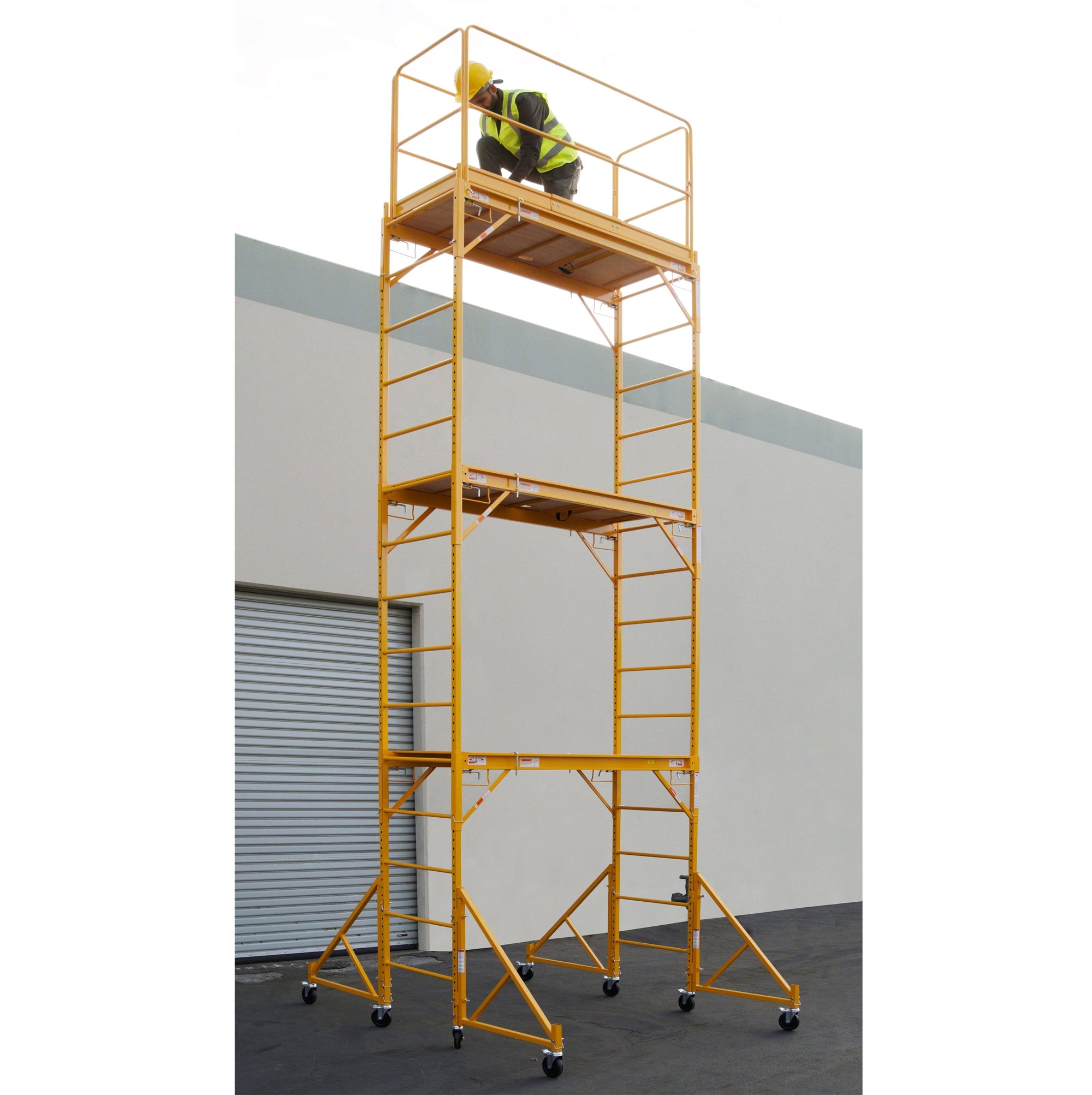Top-Notch Scaffolding Near Me: Expert Solutions for Every Job
Top-Notch Scaffolding Near Me: Expert Solutions for Every Job
Blog Article
Discovering the Different Kinds of Scaffolding Made Use Of in Construction Jobs
The construction sector depends heavily on various sorts of scaffolding to meet particular job requirements, each offering distinctive benefits and applications. Traditional structure scaffolding supplies a strong foundation for general tasks, while suspended scaffolding is important for work with high-rise frameworks. Other options, such as system and rolling scaffolding, deal with performance and mobility, respectively. The cantilever alternative verifies indispensable in metropolitan settings where space is constricted. Understanding the subtleties of these scaffolding types is vital for enhancing safety and security and efficiency on building and construction websites, triggering a more detailed exam of their unique qualities and applications.

Conventional Framework Scaffolding
Standard framework scaffolding is just one of one of the most widely utilized methods in the building market due to its effectiveness and versatility. This system includes straight and vertical structures that are constructed to create a stable platform for workers and materials. The primary parts consist of upright posts, straight journals, and angled dental braces, which together provide a solid structure that can sustain significant loads.
Among the crucial advantages of conventional frame scaffolding is its adaptability to different construction jobs, ranging from property structures to large business structures. The modular layout enables for simple assembly and disassembly, making it effective for both long-lasting and temporary projects. In addition, the system can be personalized in elevation and width, fitting various building layouts and site problems.
Safety is extremely important in scaffolding applications, and standard structure systems are geared up with guardrails and toe boards to protect against falls and ensure worker defense. Normal inspections and adherence to security guidelines are important in keeping the integrity of the scaffold (Scaffolding). Overall, standard structure scaffolding remains a fundamental choice in the building and construction industry, providing a reputable platform for labor and improving total task performance

Suspended Scaffolding
Suspended scaffolding provides a distinct solution for construction projects that call for accessibility to elevated surfaces, particularly in scenarios where standard frame scaffolding might be unwise. This kind of scaffolding is usually suspended from the roof covering or top levels of a framework, using a system of sheaves, ropes, and systems to produce a functioning space that can be gotten used to numerous heights.
Among the main advantages of suspended scaffolding is its adaptability. It can be quickly rearranged or reduced to accommodate adjustments in building demands, making it optimal for tasks such as home window setup, frontage work, and upkeep on high-rise structures. Additionally, the very little footprint of put on hold scaffolding enables better use ground area in city environments, where area is frequently limited.
Security is a crucial factor to consider in the use of suspended scaffolding. Proper rigging and securing systems have to be used to make sure security and prevent accidents. Operators should also be trained in the risk-free use this tools. On the whole, put on hold scaffolding provides a reliable and efficient service for accessing hard-to-reach areas in numerous construction situations, improving both efficiency and safety and security on website.
System Scaffolding
System scaffolding, typically considered a modern-day remedy in the scaffolding market, contains pre-engineered elements that can be rapidly constructed and adjusted for different building jobs. Scaffolding. This sort of scaffolding is defined by its modular design, which allows for convenience and efficiency on task sites, suiting various heights and structural needs
Commonly made from high-strength steel or light weight aluminum, system scaffolding offers enhanced durability and security. The elements include vertical messages, straight ledgers, and angled braces, which adjoin firmly, making certain a durable framework. The style usually includes standard installations, simplifying assembly and disassembly procedures, consequently decreasing labor time and expenses.

Rolling Scaffolding
Rolling scaffolding is a functional alternative to conventional fixed scaffolding, made for movement and convenience of usage on building and construction sites. This sort of scaffolding contains a platform supported by frameworks with wheels, permitting workers to easily move it as required. The wheelchair feature considerably boosts productivity, as it decreases downtime related to taking apart and putting together fixed scaffolding.
Generally constructed from light-weight materials such as light weight aluminum or steel, rolling scaffolding provides a durable his explanation yet mobile solution for tasks needing frequent repositioning - Scaffolding. It is particularly helpful in tasks such as painting, drywall setup, and electrical work, where accessibility to numerous elevations and locations is needed
Safety is extremely important in rolling scaffolding design, with functions such as locking wheels to protect against unexpected motion when in operation, and guardrails to shield employees from drops. In addition, several designs are flexible in height, accommodating various project demands.
Cantilever Scaffolding

The style of cantilever scaffolding commonly involves using arms or braces secured to a structure or framework, making it possible for the system web link to expand external safely. Safety is paramount; therefore, these scaffolds need to be engineered to withstand environmental conditions and numerous lots. Routine examination and upkeep are important to make certain structural integrity and employee safety and security.
Cantilever scaffolding is weblink preferred for its adaptability and effective usage of space, making it a popular option in city atmospheres where area constraints are usual. In addition, it assists in much easier access to high altitudes, eventually contributing to the general efficiency of building and construction jobs. Just like all scaffolding types, correct training and adherence to safety and security requirements are crucial for employees utilizing cantilever scaffolding.
Verdict
Conventional framework scaffolding gives security, while suspended scaffolding offers flexibility for raised jobs. System scaffolding facilitates quick assembly, and rolling scaffolding improves wheelchair for differing work environments.
Conventional framework scaffolding supplies a sturdy foundation for general tasks, while suspended scaffolding is necessary for work on high-rise frameworks.Moving scaffolding is a functional option to traditional set scaffolding, made for mobility and convenience of use on building sites. As with all scaffolding types, proper training and adherence to safety and security requirements are essential for employees using cantilever scaffolding.
Standard framework scaffolding gives security, while suspended scaffolding offers versatility for elevated jobs. System scaffolding facilitates fast setting up, and rolling scaffolding enhances wheelchair for differing job atmospheres.
Report this page